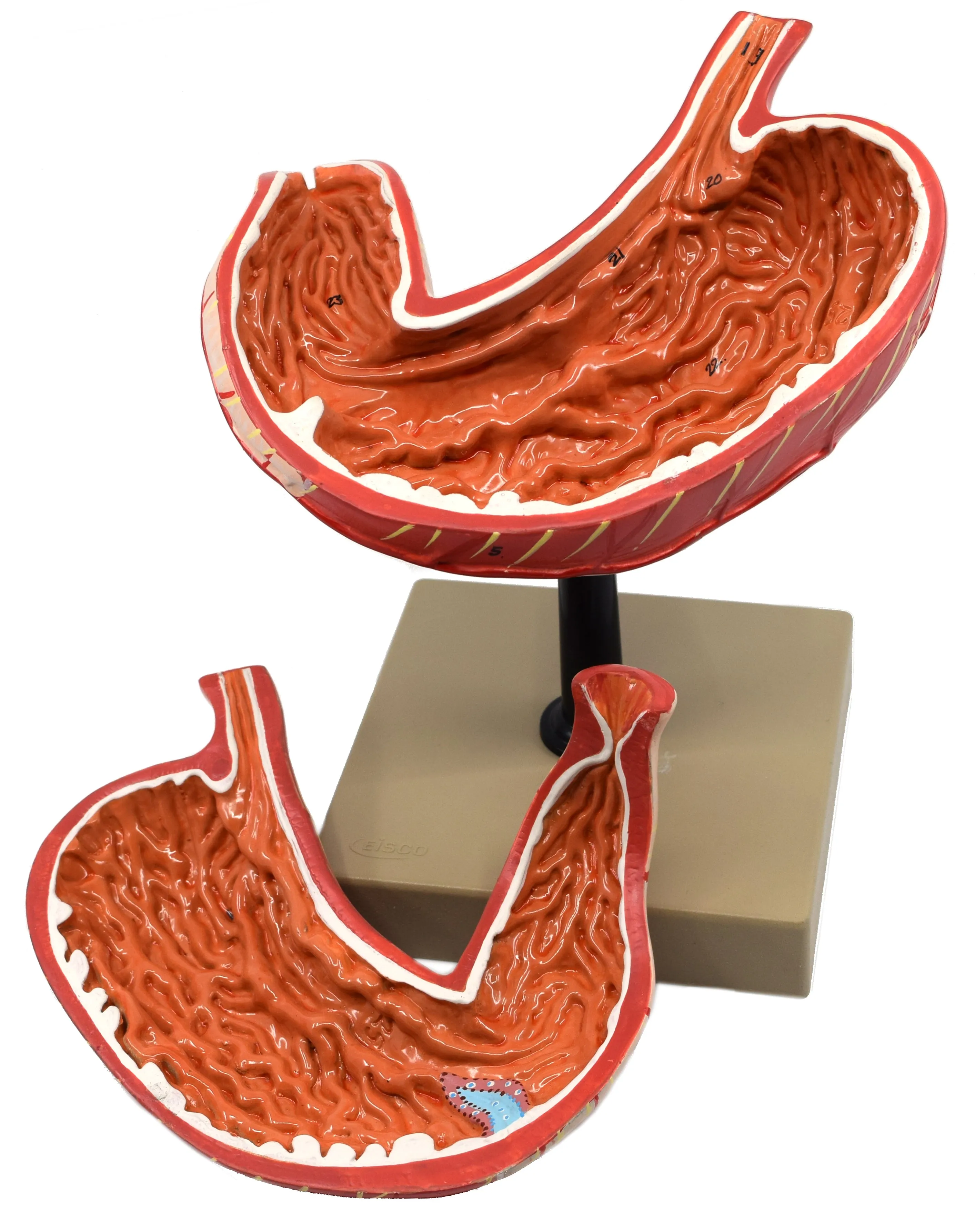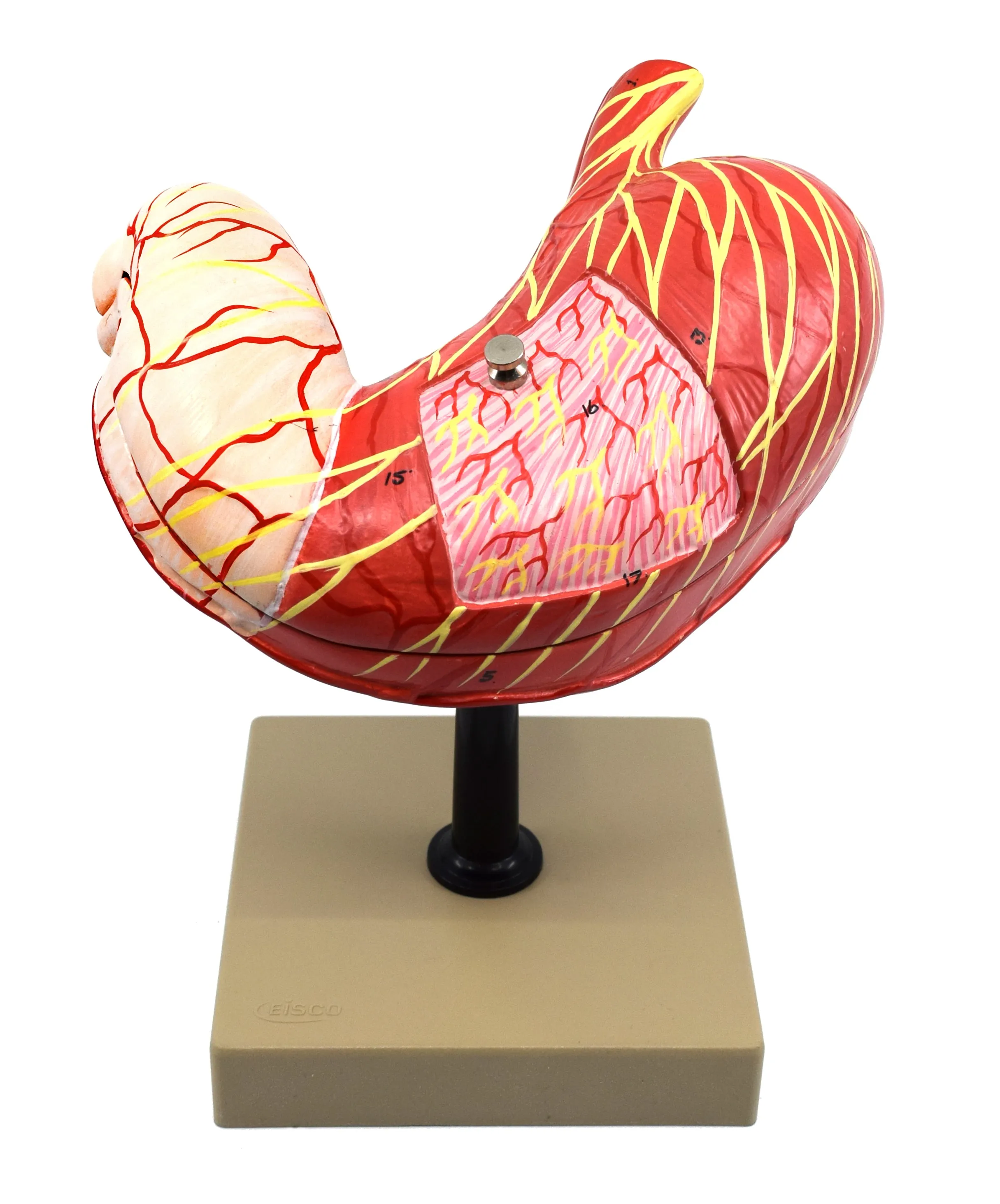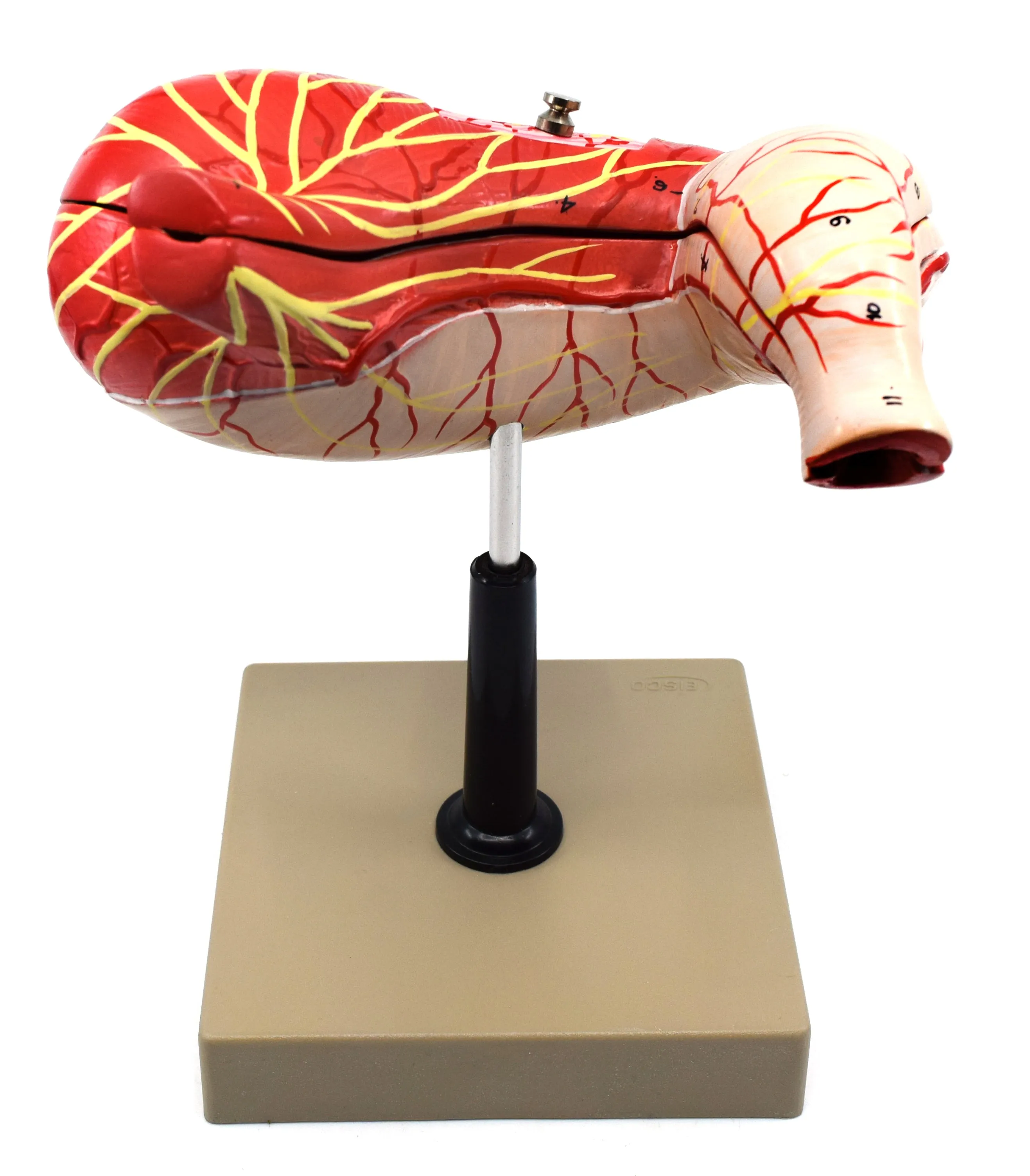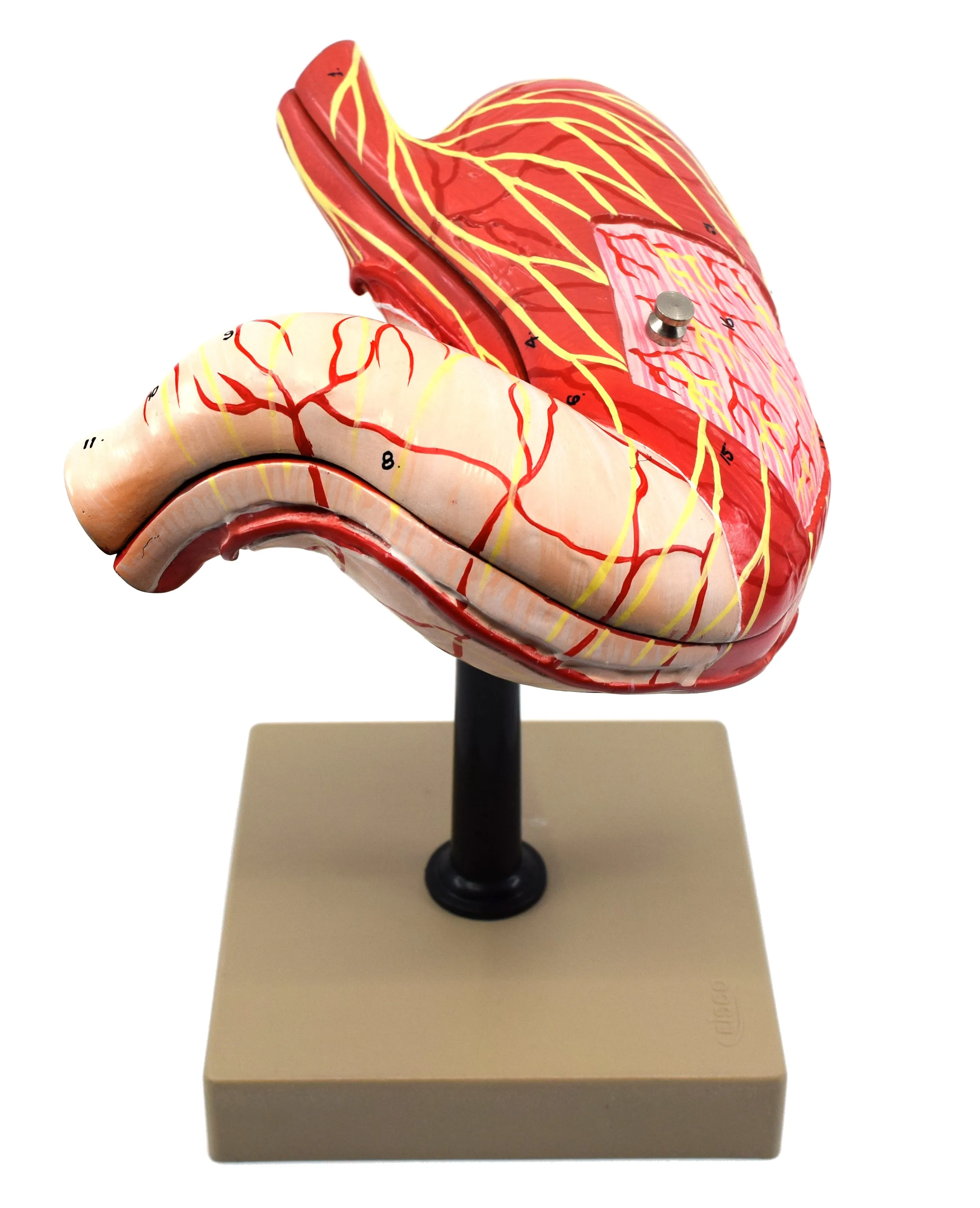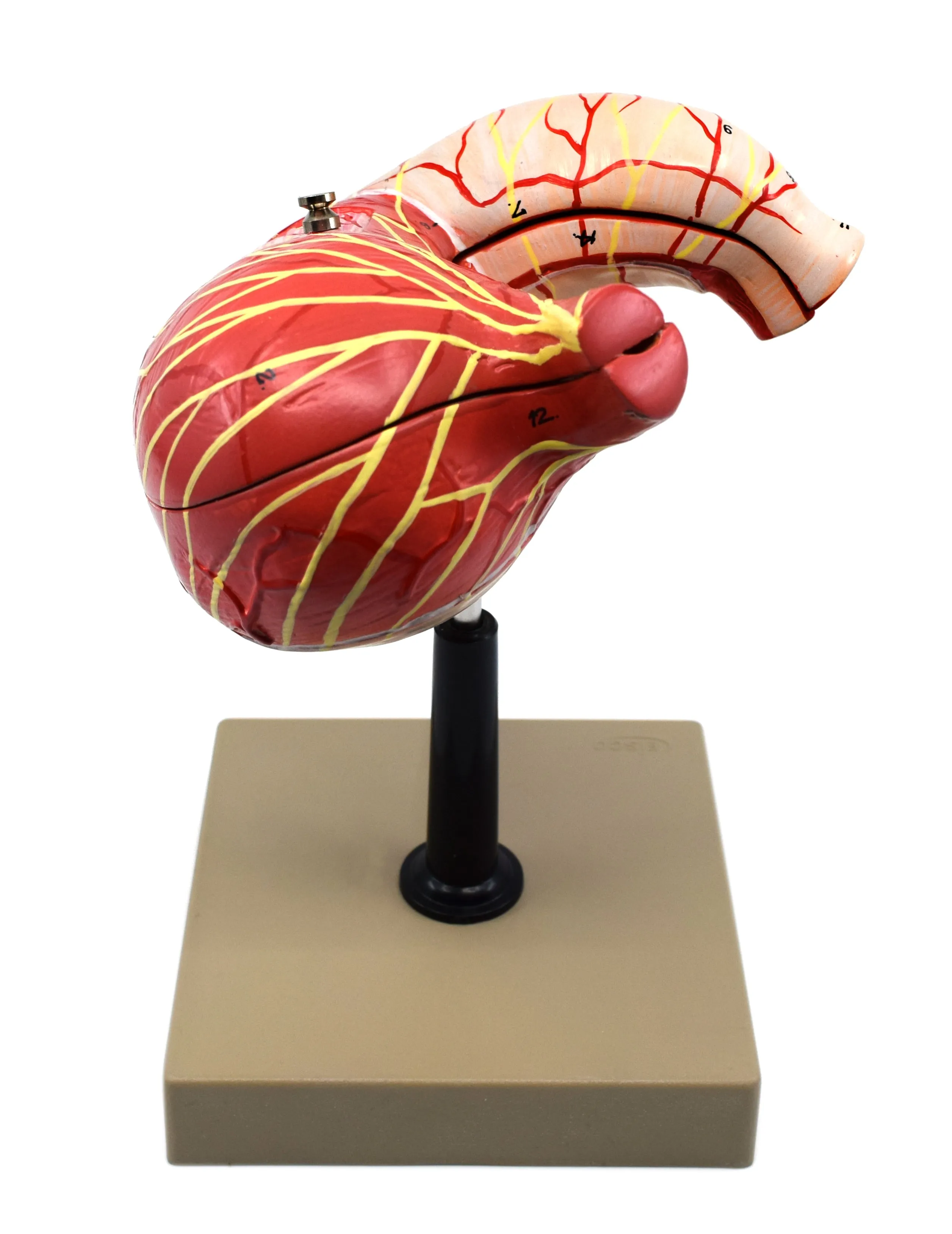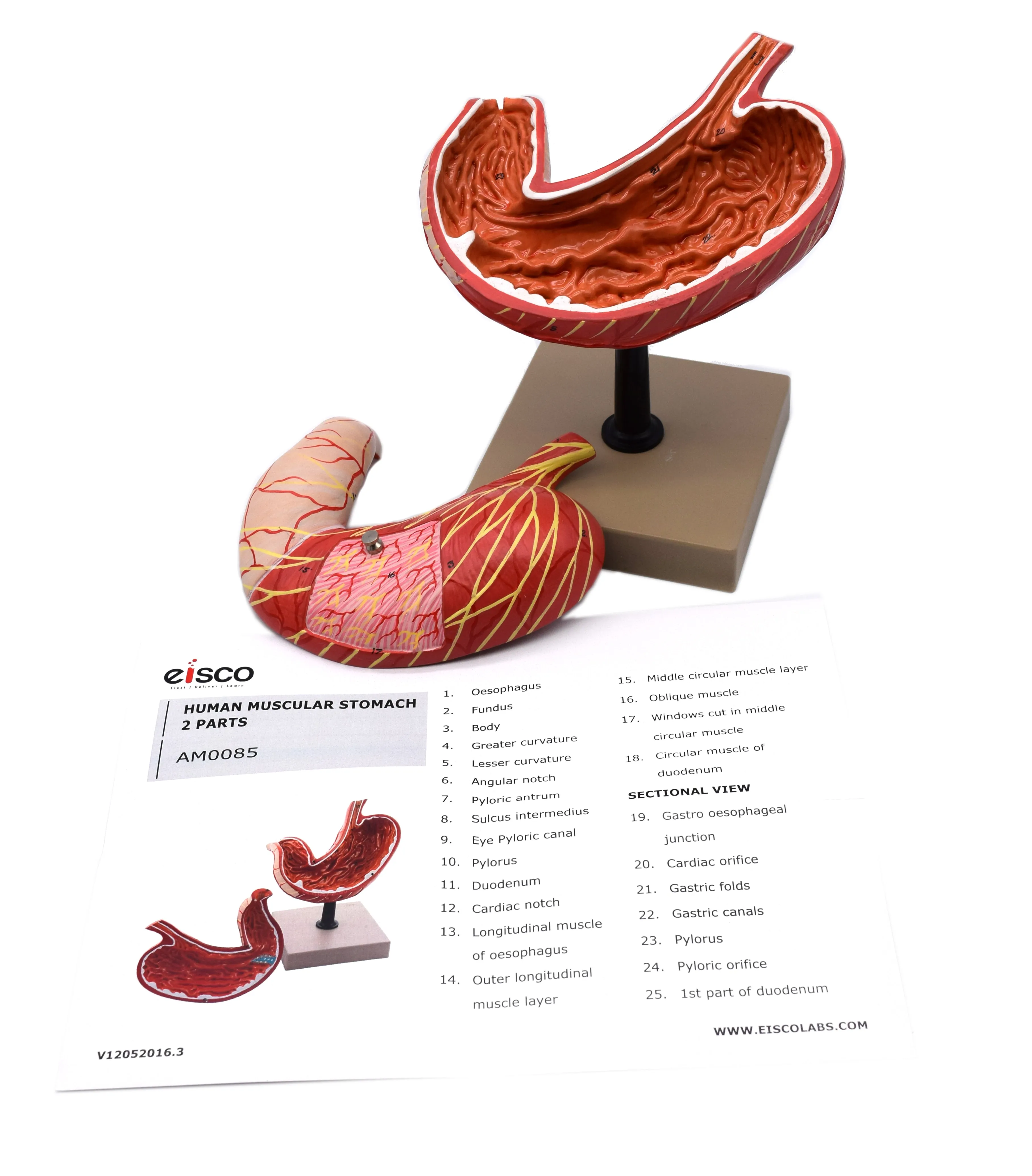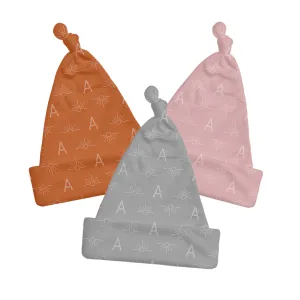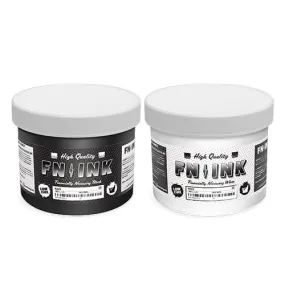- Human stomach model for biological study
- Depicts both external and internal structures
- Stomach separates at the midline to reveal the inner anatomy
- Numbered with key card for identification of features
- Mounted on base for display. Can be removed from base for study.
The detailed 3D rendering of the human stomach with its vibrantly colored anatomy is ideal for studying the structure and function of the human stomach. Key anatomical parts are colored and numbered for comparison with the anatomy key that is included. This model comes with 2 parts to be mounted on a base. Stomach can be separated, allowing students to view the entire organ in one piece, or two sectional views, which highlight internal features. Pieces are held together magnetically. This model provides a visually and kinesthetically effective method for studying the structure and function of the human stomach.
The stomach (when pieced together, and not including the base) measures 5.75" wide, 6.5" long and approximately 1.5" tall. The base measures 5" wide, 5" long and 1" high. The total height of this model, when assembled measures 7.5"
Details Identified: Oesophagus, fundus, body, greater curvature, lesser curvature, angular notch, pyloric antum, sulcus intermedius, sulcus intermedius, eye pyloric canal, pylorus, duodenum, cardiac notch, longitudinal muscle of oesophagus, outer longitudinal muscle layer, middle circular muscle layer, oblique muscle, windows cut in middle of circular muscle, circular muscle of duodenum, gastro oesophageal junction, cardiac orifice, gastric folds, gastric canals, pylorus, pyloric orifice, and first part of duodenum.Science education products incorporate applied math and science principles into classroom and homeschool-based projects. Teachers in pre-K, elementary, and secondary classrooms use science education kits and products alongside science, technology, engineering, and math (STEM) curriculum to demonstrate STEM concepts and real-world applications through hands-on activities. Science education projects include a broad range of activities, such as practical experiments in engineering, aeronautics, robotics, energy, chemistry, physics, biology, and geology.

